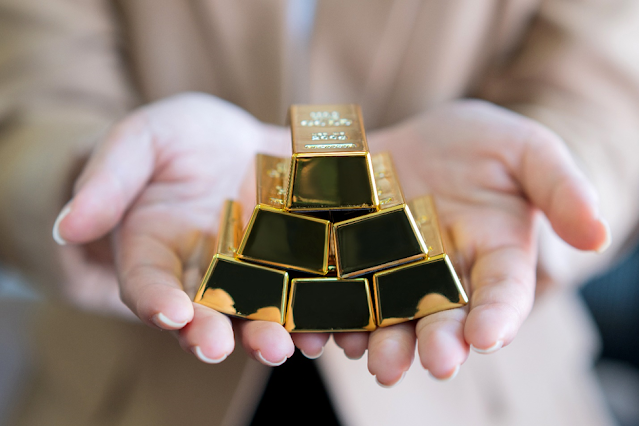GOLD AS AN INVESTMENT
Instead of viewing gold as an investment tool that we received from our parents or grandparents, Indians have a distinctive perspective on the precious metal. But over time, our perception of gold has evolved. Today, gold is viewed as an investment as well. It would be advantageous to diversify the portfolio using gold as an inflation hedge in a constantly shifting global economy. Certain events that reduce the value of stocks and bonds will cause the price of gold to increase. It helps to safeguard your cash from unfavorable stock market movements. You might invest for the long term by purchasing gold.
Sovereign Gold Bonds (SGBs): SGBs are multiples of one gram of gold that are issued by the Reserve Bank of India (RBI) on behalf of the Government of India and traded on the open market. Despite the fact that these bondholders do not really own any gold, changes in the price of gold have an impact on the bond's value. It offers market returns that are correlated with the gold price. SGBs return the initial investment plus interest at a set rate of 2.50% annually. Interest is paid semi-annually. These bonds can also be used as loan collateral because they are backed by a government guarantee. SGBs are suited for investors with low liquidity needs and a long time horizon because of their five-year minimum holding period. An investor who has no need for liquidity for the next five years can buy SGBs. During this holding period, SGB holders are compensated with an additional 2.5% interest along with changes in a bond's value.
The most direct way to access gold is through physical gold. Physical forms of gold are referred to as coins, jewelry, or bullion. Rather than its monetary face value, the value of physical gold is determined by its quantity and purity. They are available from jewelers. Having physical gold requires storage, which can be expensive if lockers are required. The best way to own gold is physical since it can be accessed quickly when needed. For long-term investors who want to purchase gold for gifts or use it as wedding jewelry. Physical gold is the best option. It is also appropriate for investors who want to speculate on gold prices; in these cases, bullion is preferable because it incurs fewer manufacturing costs. Yet, physical gold has its own disadvantages, such as the possibility of theft. It must therefore be kept in a bank locker, resulting in additional storage fees.
It is advised to devote the same amount of time to each of the three options if you haven't connected with any of the aforementioned three. Although physical gold is significant, SGB makes tax-free profits due to its illiquidity, whereas ETF is liquid and can change its gold holdings. Moreover, ETFs may be used in standard SIPs before being redeemed for consumption.







Comments
Post a Comment